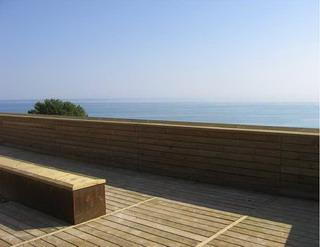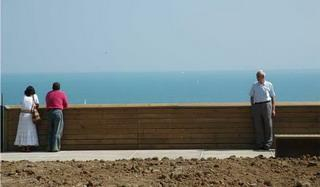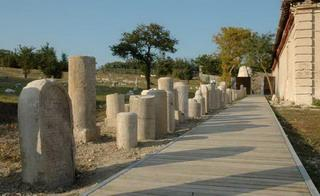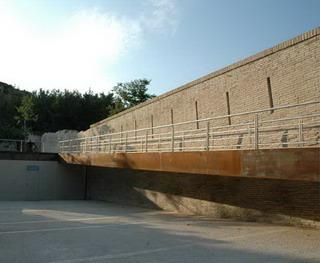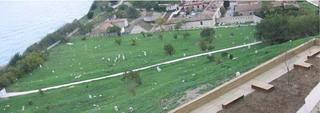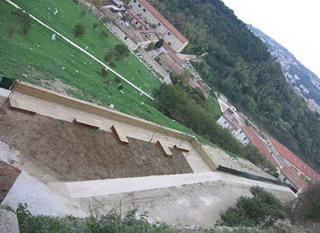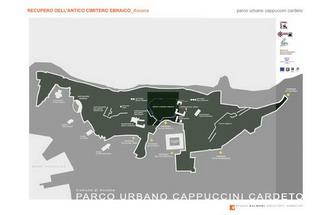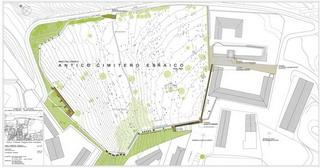Rehabilitation of the Ancient Jewish Cemetery
The project is based on three main actions.
The first is mainly focused on the design of a new fencing and of an architectural promenade around the sacred area of the ancient cemetery. In fact the ancient "campo degli Ebrei", that has been used since the 16th to the late 19th century, has an urgent need of protection, preservation, valorisation. The new fence is actually carried on in different segments, partly restauring the 19th-century wall, partly through a light metallic fence, allowing both the complete view from the outside and visual continuity from the inside of the cemetery towards the coastline and the sea. The new perimeter of the site is emphasised by a sequence of discrete architectural events.
First the main gate, finished in corten and steel, on the north side, between the cemetery and the sea. On the east side the museum, invading the area with the 19th-century barracks. Then towards the city, the south gate and and the long ramp allowing visitors to climb up directly to the lighthouse overlooking the cemetery. Finally, in the higher point, on the west side, a sort of an open hallway finished in timber and corten, acting as abelvedere with a dramatic view over the cemetery, the park and the sea and as an access area for the hill leading to the lighthouse.
The second action is the landscape design of the hill. In fact the sacred slope has to work both as a place of private memory for those who have ancient relatives buried there and as a public landmark for citizens, visitors and tourists. This led to our choices: the restauration of as many tombstones in their original place and the organisation of a minimalist network of pathways through the campo. In this way we meant to provide on one side easy access to each single stone, and on the other, the possibility to cross straight through the site so as to immediately perceive its meaning and monumentality.
The third action has directly to do with the idea of musealisation. The project has to provide an appropriate space for all the tombstones which cannot be placed back on the hill, and spaces for the documentation: information, history of tha place, translation of the niscriptions, and finally a laboratory for the analysis and restauration of the stones. The museum in located along the south side of the cemetery, partly open air with the sequence of displaced stones and partly in some of the rooms obtained by the restauration of the military barracks that the royal army built on top of the cemetery in the late 19th century.

